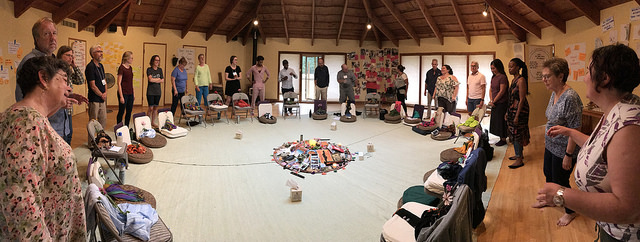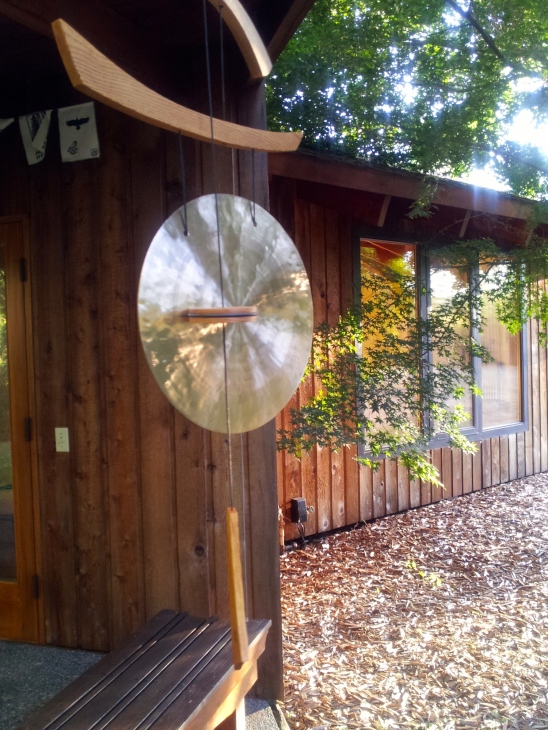
Observation is the initiating step in launching a process of change, transition, or transformation. A person, group, organization or community who determines that they are committed to fulfilling a (shared) purpose can’t just jump in and do it. Well she,he, or they can. It is very likely that they will, in Bette Davis’ words, enjoy a bumpy night.
Transforming ourselves and the communities around us requires some mindful, ritualistic, preparation. It is essential to become clear about what it is we’re undertaking and what we’re willing to lose and endure for the sake of our vision.
As The School of Life suggests, bad decisions are often predictable because we make them due to a lack of significant, discerning perspective. Jesus calls this one out too. He reminds his listeners to seriously consider the costs of becoming his disciple. (Luke 14: 25-34)
Check out this School of Life video:
This video reminds me that it is important to consider how “perfection is often the enemy of good enough.”
I prefer choosing to enter into the chaos of becoming someone or something better than I was when I woke up this morning. Such quests demand contemplation and action. We must develop, devote, and deliver time, energy, and wisdom into refining and rebirthing our processes of observation. I found myself podcasting about this topic last Friday. I preached on the topic on Sunday.

Here are suggestions for your consideration regarding how to become a better observer of your life’s circumstances, personal/organizational well-being, spiritual/professional sanity and becoming more successful. Skip to Summing it up if you don’t want to read each suggestion.
- Two important reminds from my time in the Air Force.
- Develop a keen sense of Situational Awareness.
- Map the Process before you embark upon changing it. (This applies to spiritual practices such as prayer as well as for redesigning an assembly line).
- Courage shape how we observe and occupy our sphere of influence in the world.
- Observation, not seeing – initiates our pilgrimage as a human being.
- Read All The World We Cannot See.
- Some of the most aware human beings in history were physically sightless.
- Self-awareness is essential if we yearn to live divinely inspired lives.
- Our shadows are equally if not at times more important than our strengths.
- Observation, not seeing – initiates our pilgrimage as a human being.
- We are wholehearted and complex beyond our capacities to understand ourselves without imagination and logic.
- Life requires observing how we navigate the boundaries between chaos and control.
- Each of us possesses a unique spark/essence of The Divine.
- Peterson suggests that each of the hundreds of moral choices we decide upon has profound consequences.
- We therefore should develop a disciplined manner of observing how we think, what we say, and how we act (and why).
- Observing our process of decision making will shake up our assumptions of when and why we choose to do what we do.
- Set a goal to identify self-imposed and/or undeserved suffering.
- The term observation’s etymology dates to the 10th Century Latin term “observare.” It means to heed or attend to somebody, something.
- 14 Century Old English word became ‘observen.’ It means ‘to hold to’ or ‘adopt a manner of life.’
- To attend to – practice.
- These definitions broaden as well as tighten the scope of living a spiritually and professionally astute life.
- 14 Century Old English word became ‘observen.’ It means ‘to hold to’ or ‘adopt a manner of life.’
- The first step of the scientific model is to observe something leading to a question as well as a hypothesis of what is going on.
- My spouse – an epidemiologist and priest offers these awesome observational tools.
- Be curious habitually about patterns and mechanisms.
- Value the joy and confusion that is naturally associated with new discoveries and further curiosities.
- Become self-aware – look inward toward biases, assumptions.
- My spouse – an epidemiologist and priest offers these awesome observational tools.
- If you devote the energy and committed the resources to bring about profound change then you possess what you need to focus the lenses of your observational skills upon whatever it is that is most urgent and important.
- We are vulnerable, all-ways. Vulnerability should lead to exploration rather than flight.
- What virtues, skills can you offer that will reduce your own suffering as well as the suffering beyond yourself.
- Jesus Christ’s purpose for coming into his disciples lives and ours is to motivate all of us to become more divine -thru humility, sacrifice, and new birth..
- Redeem life
- Share virtues especially when such acts will reduce pain and provide joy.
- Read the story of Jesus’ encounter with The Bent-over Woman.
- Jesus Christ’s purpose for coming into his disciples lives and ours is to motivate all of us to become more divine -thru humility, sacrifice, and new birth..
Summing it up – Become intentional about responding in contrast to reacting. Be curious rather than judgmental – prudent rather than impatient.These guidelines are especially true when there’s time and space available to Put First Things First.

In closing I’ll offer you one of my transformational and observational “first things” as an example. I’ve been observing and farming Monarch butterflies for the past three summers. Why? First, monarch butterflies are dying by the millions across the United States. Selfish and foolish human beings, as with so many other species, are responsible for killing these beautiful creatures. California’s monarch butterfly numbers are at an all-time low, having declined more than 85 percent from 2017, according to the Xerces Society for Invertebrate Conservation. Overall, the North American monarch butterfly population has shrunk by more than 90 percent in the past two decades.
Personally, I’m fascinated by these 400-million year-old insects. Metamorphosis happens throughout the process – especially in the chrysalis. The caterpillar’s old body parts are burning up as they undergo a remarkable transformation. I’m intrigued by their month-long process of being birthed as a small egg, wandering methodically through their caterpillar stages, and ultimately transforming into a beautiful butterfly. Christians along with dozens of other spiritual-religious communities observe butterflies as being symbols of hope and resurrection. Observing this process requires developing keen gifts of observation. Patience is virtuous. The virtue of awe is captivating.
Observing butterflies teaches me to spend time in the balcony. (Heifetz) I develop questions based upon sensory discernment. I learn to document my observations before analyzing them. This engagement become a third eye process of enlightenment, Spending time around the milkweed and butterfly bushes is a portal toward greater spiritual development. I don’t know what I don’t know. Thus, I must seek objective wisdom. Selfishly, I giggle and smile alot while all of the butterflies and bees perform their flying circus acts in my backyard.

The monarchs’ evolution also teaches me more about the art of observation. Monarchs use their large, compound eyes to track the sun’s position in the sky, combining the information with the time of day to know where to go. These clever insects also tap into their internal body clocks, based on the rhythmic expression of key genes that maintain a daily pattern of physiological processes and behavior.
I experience great joy and a new meaning of life by living into the monarch’s story. These butterflies reminds me to recall life’s miraculous nature. Their presence prompts me to stop, observe,breathe, learn, and respond. I just might promote the world’s healing by doing my part to preserve these beautiful bugs. Observing them change from egg to caterpillar to chrysalis to butterfly deepens my faith in a loving, gracious God whose design is embedded within life’s web.
My personal choices along with yours have huge ramifications in terms of whether or not this and future generations of butterflies, plants, and animals, and human beings will survive. What goes on in my garden strengthens my will to become more of an advocate for nurturing this fragile planet that we are radically harming. We participate in the womb-tomb-rebirthing cycles of life. Do we wish to choose to be executioners because we don’t take the time to observe the consequences of our actions and our governments’ resistance to acknowledging the truth? Seek, Observe, Find, Open The Doors. (Luke 11: 9-10).
I’ll close with this video.
Blessings along The Way, Jim












 I went to
I went to 

 I came home to this picture.
I came home to this picture. What I find spiritually, ethically, and theological renewing is that there are emerging efforts across the globe to confront these realities. Episcopalians have decided to make the
What I find spiritually, ethically, and theological renewing is that there are emerging efforts across the globe to confront these realities. Episcopalians have decided to make the 
















 Jesus, in the
Jesus, in the  Creativity is one of my greatest character strengths. I didn’t ask for it. It is a gift from God. If writing is one unique way for me to express my original thoughts and ideas – so be it. I’m guessing that I’ll have to use this and some of my other strengths to build up my prudence, humility, and self-regulation. Perhaps this blog will become a more regular weekly exercise for me to accomplish – along with getting to Planet Fitness.
Creativity is one of my greatest character strengths. I didn’t ask for it. It is a gift from God. If writing is one unique way for me to express my original thoughts and ideas – so be it. I’m guessing that I’ll have to use this and some of my other strengths to build up my prudence, humility, and self-regulation. Perhaps this blog will become a more regular weekly exercise for me to accomplish – along with getting to Planet Fitness.